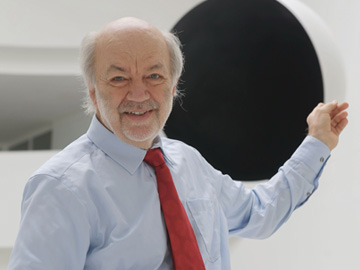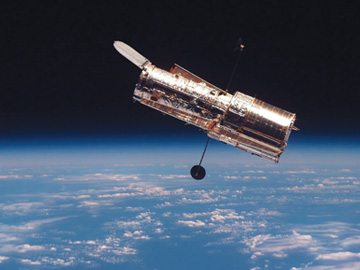 [Image: S. Spangenberg]
[Image: S. Spangenberg]
As we swing through the 2024 conference season—with a successful OFC Conference in March, and the runup to this year’s edition of CLEO in May—our focus is naturally on communicating with our peers regarding current R&D topics of interest. In those and other meetings, conference floors in 2024 will buzz with lively discussions about the latest research, engineering feats and promising devices.
But amid that excitement, we may also occasionally pause for a minute, lean back and consider which of the topics we are occupied with today will be remembered, say, 30 years from now. Of course, we do not know and can only guess.
However, we can look back 30 years, to see what researchers were occupied with then. In that spirit, I recently looked at the Optics & Photonics News issue of May 1994, a year that marked my personal transition from industry back to academia. What caught my attention in this issue from exactly three decades ago was an article by R.R. Shannon, titled “Hubble as a Phenomenon: Lessons for All.”
I vividly remember the challenging Hubble Space Telescope (HST) project—and how, once the observatory was installed in Earth orbit after years of work, it seemed at first the biggest science disaster of all time. But then, unexpectedly to many of us, it was turned into a great success, thanks to a dazzling in-orbit repair wrought by the installation of cutting-edge aspheric optics. I clearly recall the case, but I had forgotten subtle aspects. The OPN story from 30 years back offered a welcome reminder.
 The HST servicing mission turned a potential disaster into an enduring success. [Image: NASA]
The HST servicing mission turned a potential disaster into an enduring success. [Image: NASA]
I emphasize this project here and now because it offers interesting lessons to be learned, and younger members of our community may not yet have had time to appreciate all of them. For example, a large-scale project’s development phase sometimes lasts far longer than the working lifetimes of some of those involved. In Shannon’s thoughtful essay, we read this statement: “With the usual ability of the public to forget the successful and concentrate only on the disasters, the Hubble experience will probably now be forgotten.”
I think—and hope!—that it is not forgotten. It would indeed be a shame to forget how the success of the HST rescue mission enabled the vast expansion of our understanding of the universe that instrument has opened up in the decades since. That is why Shannon’s article is still worth reading, in hindsight, 30 years later. I commend Optica for maintaining its archive of Optics & Photonics News!
—Gerd Leuchs,
Optica President
View Chinese, French, German, Japanese and Spanish translations of this message:
